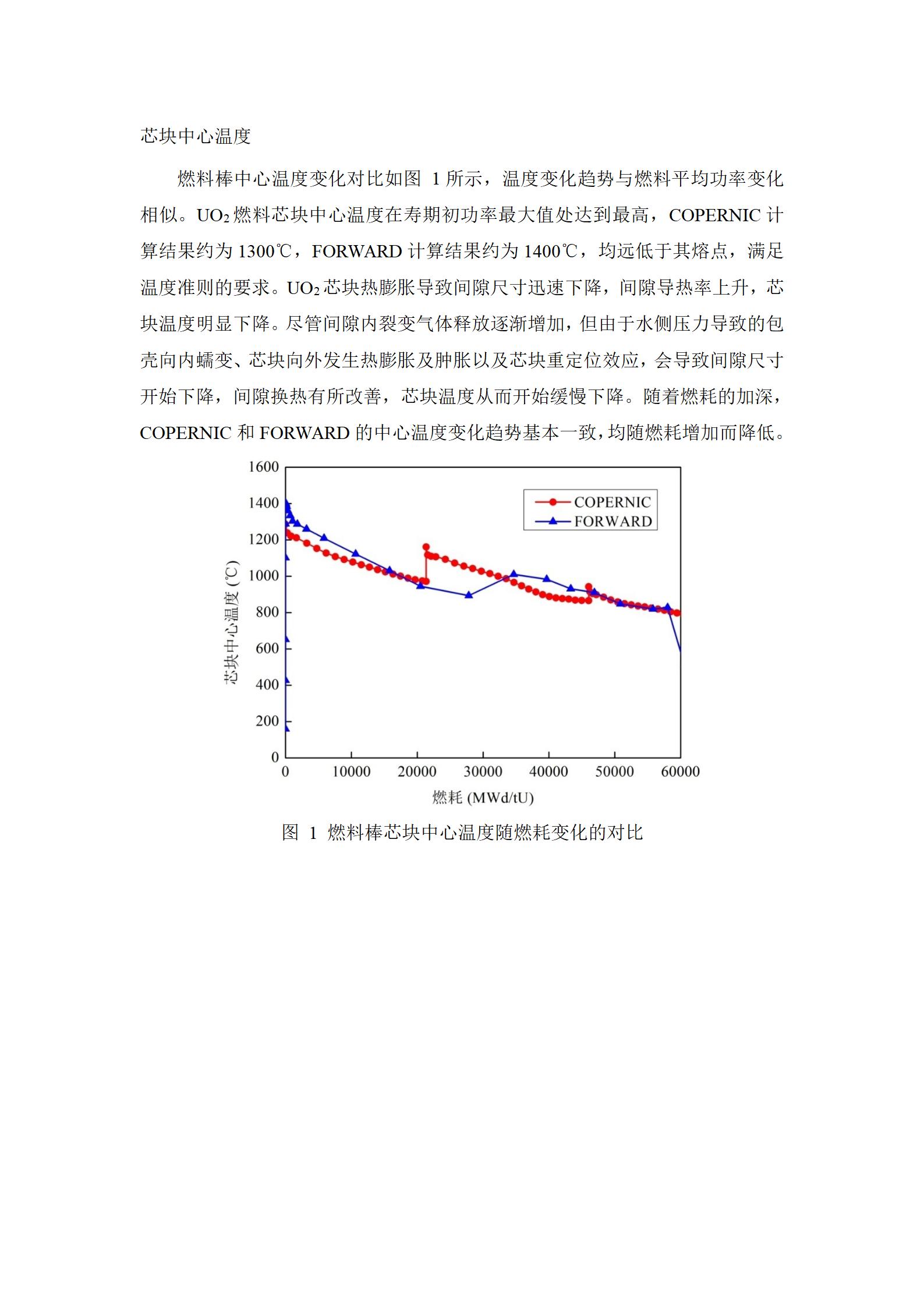
燃料棒中心温度变化对比如图 1所示,温度变化趋势与燃料平均功率变化相似。UO2燃料芯块中心温度在寿期初功率最大值处达到最高,COPERNIC计算结果约为1300℃,FORWARD计算结果约为1400℃,均远低于其熔点,满足温度准则的要求。UO2芯块热膨胀导致间隙尺寸迅速下降,间隙导热率上升,芯块温度明显下降。尽管间隙内裂变气体释放逐渐增加,但由于水侧压力导致的包壳向内蠕变、芯块向外发生热膨胀及肿胀以及芯块重定位效应,会导致间隙尺寸开始下降,间隙换热有所改善,芯块温度从而开始缓慢下降。随着燃耗的加深,COPERNIC和FORWARD的中心温度变化趋势基本一致,均随燃耗增加而降低。
The temperature change in the center temperature of the fuel rod is similar to the change in the average power of the fuel, as shown in Figure 1. The core temperature of the UO2 fuel pellet reaches the highest at the maximum power at the beginning of the lifetime, and the COPERNIC calculation result is about 1300 °C and the FORWARD calculation result is about 1400 °C, both well below its melting point and meet the requirements of temperature guidelines. The thermal expansion of the UO2 pellet causes the gap size to decrease rapidly, the gap thermal conductivity to rise, and the pellet temperature to decrease significantly. Although the release of fissile gases in the gap gradually increases, due to the creep of the cladding caused by the pressure on the water side, the thermal expansion and swelling of the pellet outward, and the repositioning effect of the pellet, the size of the gap begins to decrease, the gap heat transfer improves, and the temperature of the pellet begins to slowly decrease. As fuel consumption deepens, the central temperature change trend of COPERNIC and FORWARD is basically the same, and both decrease with the increase of fuel consumption.